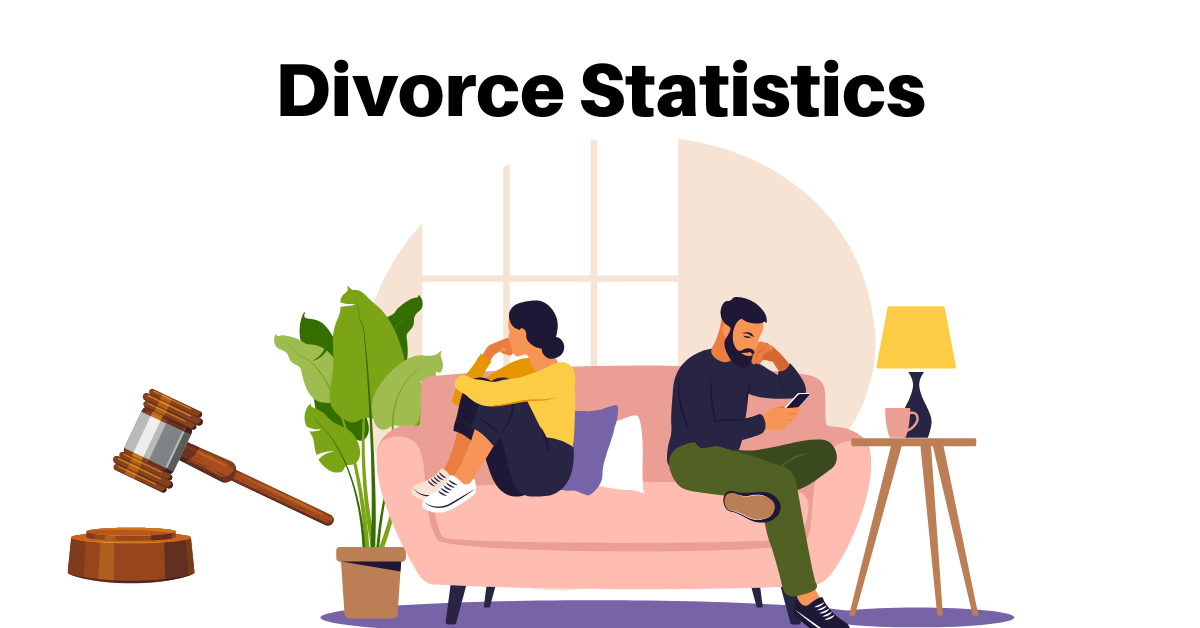Divorce in England: The Divorce Capitals Revealed in 2025

The new year often inspires fresh starts, but for many couples across England, that new beginning doesn’t come in the form of resolutions — it comes in the form of divorce. January, particularly the first working Monday, has earned the nickname “Divorce Day.” In 2025, that fell on January 6th, marking a yearly spike in divorce-related enquiries to law firms across the country.
But does the data back up this seasonal surge? What does the current landscape of divorce in England look like — and where are the so-called Divorce Capitals of the country?
Let’s dig into the trends, stats, and regional breakdowns shaping divorce in England today.
Why Does Divorce Spike in January?
Every January, family law firms report a sharp increase in calls and consultations. But what makes this month such a hotspot for breakups?
- Festive Fallout: Spending extended time together over the holidays often exposes deep-seated issues in a relationship that can no longer be ignored.
- Financial Stress: The cost of Christmas, compounded by ongoing cost of living challenges, puts additional pressure on already strained relationships.
- Delayed Action: Many couples “hold on” through the holidays for the sake of children or family harmony before making major changes in January.
Despite this uptick, 2024’s statistics tell a slightly more nuanced story.
Divorce Trends in 2024: A Mixed Picture
While January through March 2024 did see 29,557 divorce applications — a traditionally busy quarter — this actually marked a 6% decrease from the same period in 2023.
Here’s the quarterly breakdown:
- Q1 (Jan–Mar): 29,557 applications
- Q2 (Apr–Jun): 26,928 applications
- Q3 (Jul–Sep): 27,003 applications
Despite the slow start, the first nine months of 2024 saw a 1.8% overall increase in applications compared to the same period in 2023, suggesting that while timing may fluctuate, the underlying trend remains steady.
Interestingly, the average age of divorce continues to rise:
- Men: 47 years old (2023), up from 44 in 2013
- Women: 45 years old (2023), up from 42 in 2013
This reflects broader societal shifts — including marrying later in life and an increase in the single population.
The Divorce Capitals of England: Where It’s Happening Most
According to the latest ONS and Census data, coastal towns dominate the list of areas with the highest proportion of previously divorced individuals.
Top 4 Divorce Capitals of England (2024):
- Norwich – 12.8%
- Hastings – 12.1%
- Blackpool – 12.1%
- Lincoln – 11.9%
Coastal towns make up 90% of the top 10 divorce hotspots. Why?
- Fresh Starts: These towns are popular with people seeking a new chapter post-divorce.
- Affordability: Lower living costs appeal to those navigating financial recovery.
- Demographics: Coastal towns often have older populations and higher rates of social deprivation — both linked to higher divorce rates.
Where Are People Googling ‘Divorce’ the Most?
Beyond statistics, online behaviour tells its own story. Our analysis of Google search trends across the UK reveals which regions are actively researching divorce-related topics.
Top Regions by 'Divorce' Search Volume (2024):
- East of England – 30%
- East Midlands – 25%
- South West – 24%
- South East – 22%
- Yorkshire and the Humber – 21%
At the bottom of the list:
- Greater London – 13%
- North East – 12%
Even more revealing are the specific counties with the highest search volumes per 1,000 residents:
- Essex – 50% (possibly influenced by pop culture references like TOWIE)
- East Riding, Lincolnshire, Shropshire, Lancashire – all at or near 30%
- Darlington, Dorset, Durham, Kent, Norfolk – 28–29%
Who Is Most Likely to Get Divorced?
Statistically, the majority of divorces occur between 3 to 8 years into a marriage — with a peak around years 4 and 5. If a couple makes it past the 8-year mark, their chances of long-term success increase.
However, there’s a rising trend among older couples: the so-called Silver Splitters.
Divorces among those aged 60 and over have jumped by 23% over the last decade, reflecting changing attitudes towards relationships in later life and a greater emphasis on personal happiness.
How Long Does Divorce Take in 2025?
Since the Divorce, Dissolution and Separation Act 2020 came into force in April 2022, couples no longer need to assign blame for the breakdown of their marriage. This no-fault process has streamlined divorce, but it’s still not quick.
- Average time to conditional order: 31 weeks
- Average time to final order: 42 weeks
While the emotional toll can vary greatly, these timelines offer a rough estimate of the legal process.
Support for Those Going Through Divorce
Divorce can feel isolating, but you don’t have to go through it alone. At Fair-Result, we offer comprehensive support through every phase of the process — from legal advice to emotional resilience.
1. Legal Guidance
Clarity is power. We provide straightforward, cost-effective legal services with complete transparency — no hidden fees, no courtroom battles unless absolutely necessary.
2. Financial Planning
From pensions to property, we help you understand and manage the financial implications of divorce.
3. Emotional Support
Our network of therapists and peer resources can help you navigate the emotional side of separation.
4. Co-Parenting Guidance
Children come first. We provide actionable advice on co-parenting agreements that reduce conflict and promote stability.
5. Rebuilding After Divorce
Once the papers are signed, life begins anew. Whether it's housing, career support, or life coaching — we’re here to help you build your next chapter.
Ready to Talk?
The experienced family solicitors at Parachute Law offer clear, compassionate legal guidance tailored to your situation.
Book your free consultation today and take the first step toward your new beginning
Related Articles:


